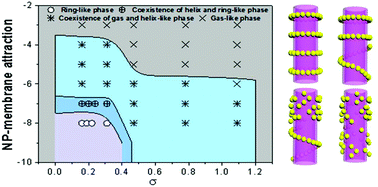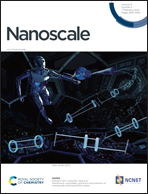Radial aggregation of proteins prevails over axial aggregation on membrane tubes
Abstract
Tubular membrane structures are abundant in living cells and participate in various cell activities with the help of specific proteins. This complicated protein–membrane interaction raises a largely unclear question of how cells create, maintain and eliminate membrane nanotubes with a variety of proteins involved. To simplify the question and to give a common mechanism, we simply model membrane proteins as various solid nanoparticles (NPs) of different shapes, instead of considering the detailed structure of different proteins. With this minimal model of membrane proteins, we use molecular simulations to study the common features for protein self-assembly on membrane tubes. Both molecular simulations and energy analysis reveal that on tubular membrane surfaces, the radial aggregation structure of spherical NPs prevails over axial aggregation. We demonstrate that anisotropic deformation of membrane tubes by NP adhesion leads to a direction-dependent (effective) inter-NP attraction, which controls the direction of NP assembly. Moreover, this radial aggregation morphology seems to be independent of the shape of NPs, except for NPs with a length comparable to the tube diameter. This observation indicates that proteins with strong adhesion to a membrane tube tend to form ring-like aggregates, and this finding offers an insight into how proteins play their roles in generating, maintaining and breaking tubular membrane structures.

- This article is part of the themed collection: Theoretical Modelling at Nano-bio Interfaces


 Please wait while we load your content...
Please wait while we load your content...